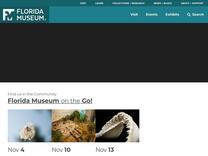Sailfin Blenny – Discover Fishes https://www.floridamuseum.ufl.edu/discover-fish/species-profiles/sailfin-blenny/
Emblemaria pandionis This small fish has a long, scaleless body and a large, distinct dorsal fin that tends to be larger on males. Their blunt faces are topped with a cirrus above each eye and next to the nostrils. They live in clear, shallow water along rocky shores or reefs where there is rubbl
Food Habits The sailfin blenny is a carnivore, feeding on small invertebrates and plankton

